Leer en español: Prácticas resistentes a la sequía
Did you know that the USDA Soil Conservation Service (now called the Natural Resources Conservation Service or NRCS) was founded in 1933 during the Dust Bowl to help farmers conserve soil, especially during times of drought?
Today, NRCS offers cost sharing for practices that help farmers improve natural resources on the farm. Although the Northeast region is already experiencing a greater number of heavier rainfall events, the frequency for drought is increasing within the growing season. In order to keep production on target, many farms may find that they need to change the way they farm to help them better manage the increasing extremes of ‘too wet’ and ‘too dry.’ Below are a few short and long-term strategies for dealing with drought conditions that NRCS will financially assist you with: prescribed grazing, mulching, no-till or reduced tillage, cover crops, and microirrigation. For more information about NRCS Drought assistance, including how to find your local NRCS office, check out 5 Steps for Assistance.
Soil temperature can affect plant growth in a number of ways.
High soil temperatures can reduce root growth and nutrient uptake which affects yield. High temperatures also increase soil evaporation so more water is lost. High temperatures can make soil inhospitable to beneficial organisms such as worms or nitrogen fixing bacteria. In most plants, as soil temperature increases above 86 degrees, root growth slows and nutrient uptake diminishes. In cool-season grasses, root growth stops when soil temperatures reach 90 degrees F. In corn, it is around 95 degrees F.
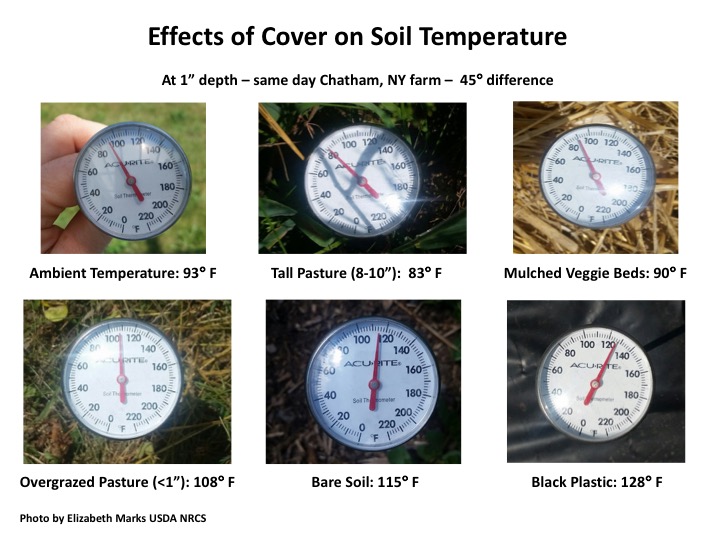
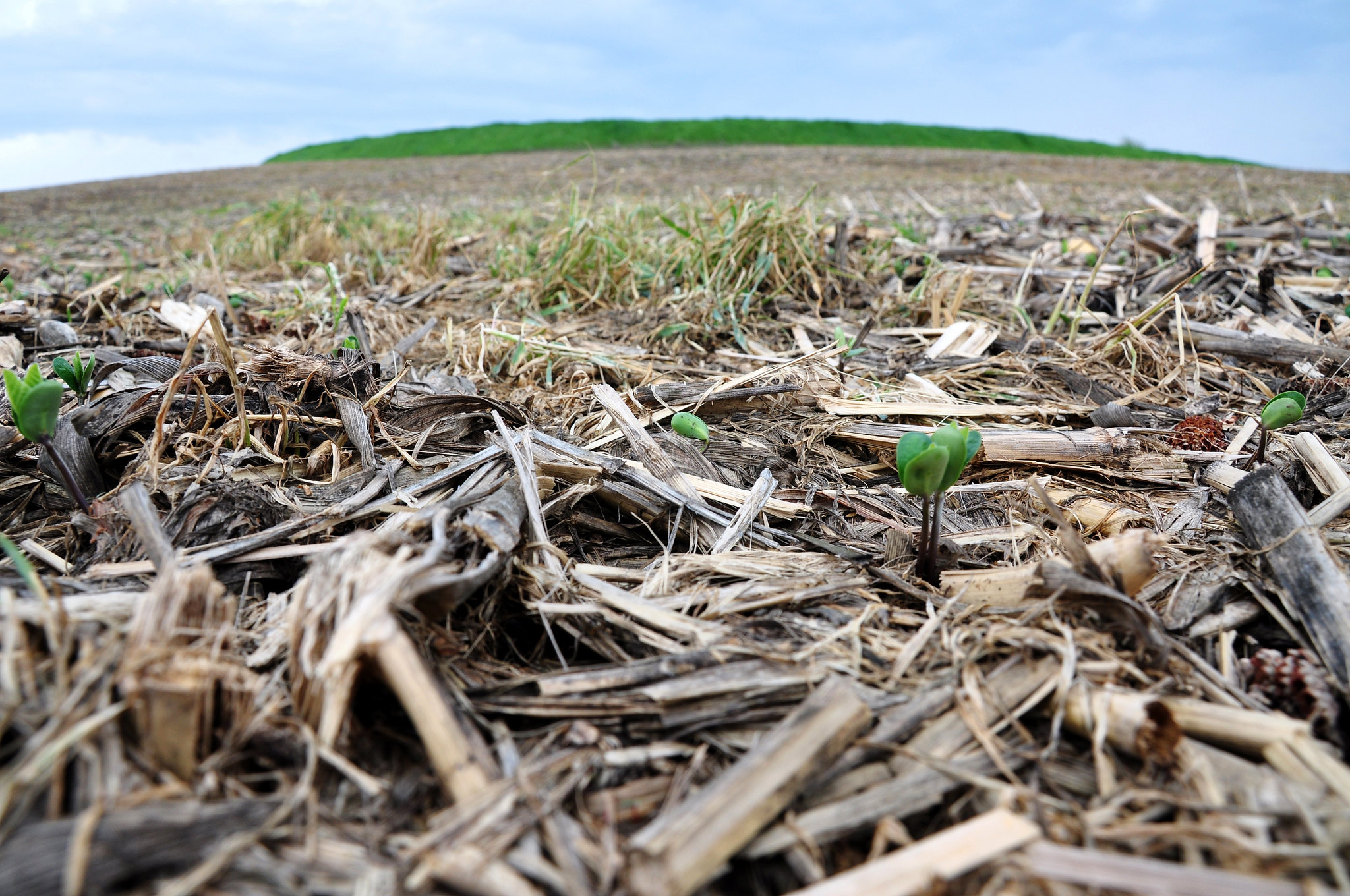
Mulching/Residue Management
Keeping the soil covered (NRCS Practice 484 Mulching) substantially lowers the soil temperature and reduces water loss from evaporation, something that is critical during times of drought. For instance, on a hot summer day, near surface (1-inch depth) soil temperatures at a farm in New York varied by 45 degrees F depending on the soil cover. Mulch, from natural materials like straw, breaks down and increases soil organic matter which improves the soil’s water holding capacity. Leaving last year’s plant residue in the field (NRCS Practice 329 Residue and Tillage Management No-Till or 345 Reduced Till) covers the soil as well, reducing soil temperatures and water loss while building soil organic matter.
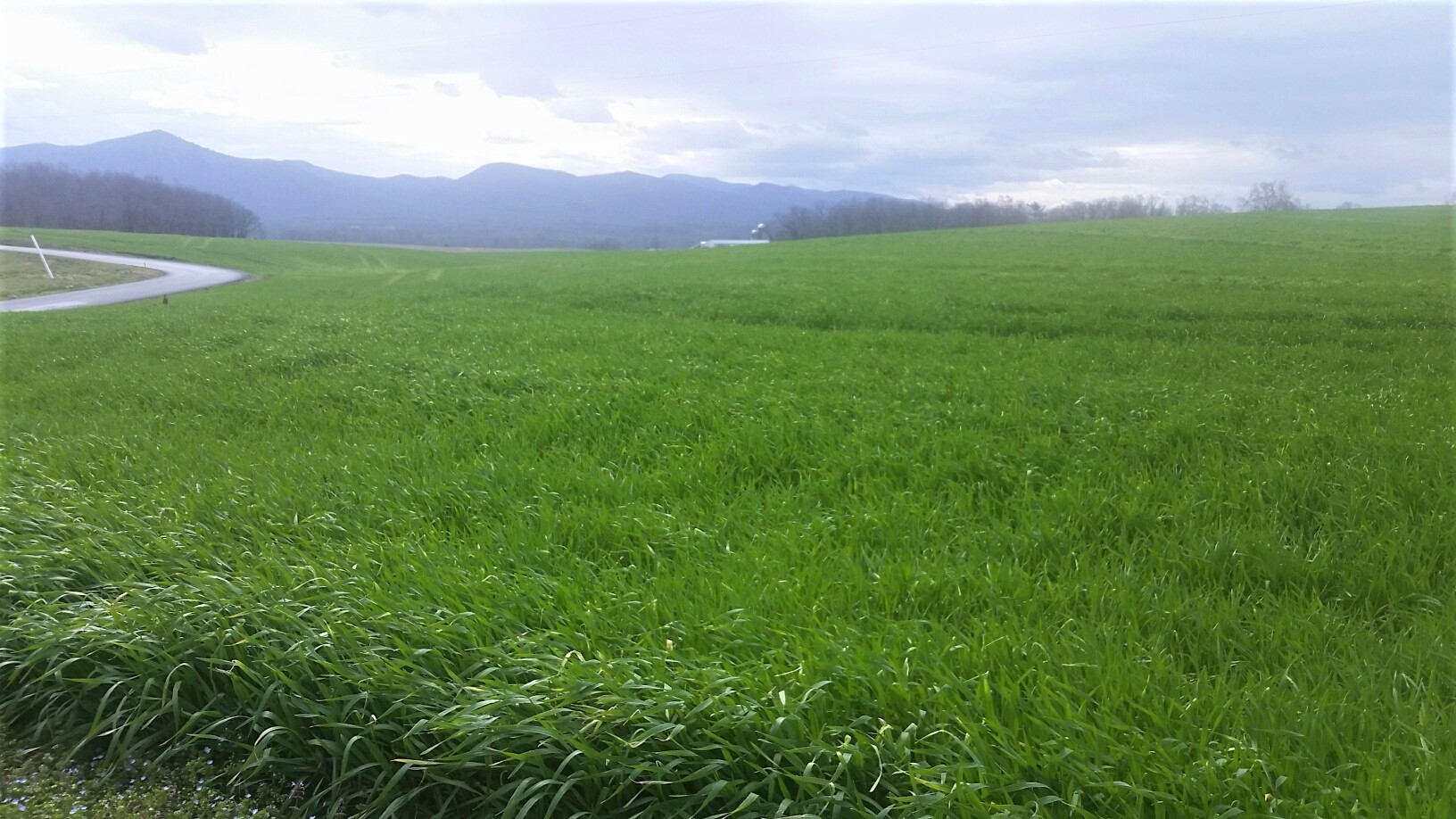
Cover Crops
Cover crops (NRCS Practice 340 Cover Crop) can improve a farm’s climate resilience. They keep the soil covered and therefore cooler while increasing organic matter in the soil. One percent of organic matter in soil can hold as much as 20,000 gallons of water per acre. Higher amounts of organic matter in the soil allow it to absorb and retain more moisture. Cover crops can be interseeded or seeded after the cash crop is harvested (pictured is fall cereal rye in spring planted after corn harvest the previous fall).
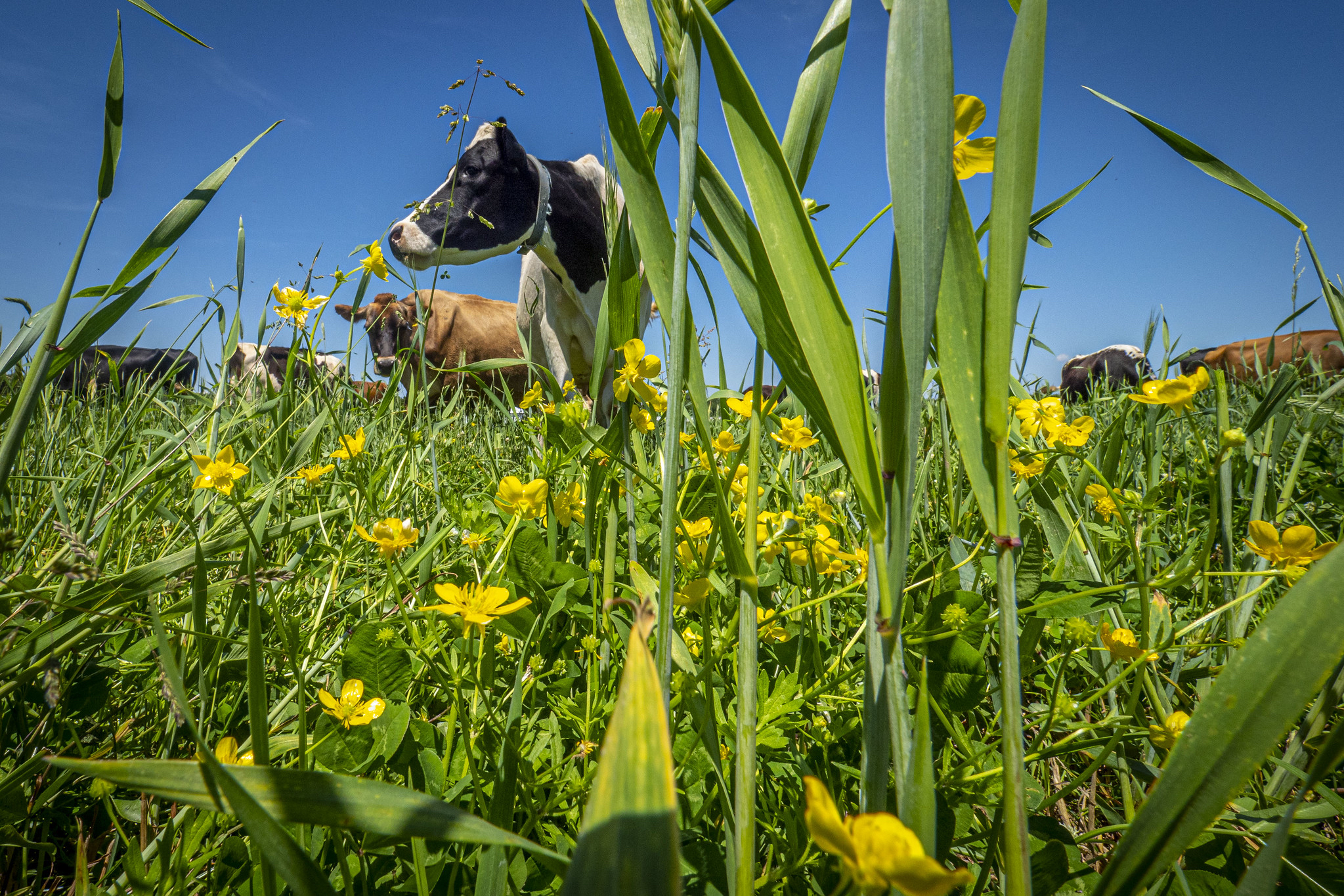
Pasture Management
Well managed pastures (NRCS Practice 528 Prescribed Grazing) that allow forage to rest and recover to a taller height are more resistant to drought. Taller grass shades the ground, making it cooler, and reduces water loss from soil evaporation. Taller grass also has longer roots that are able to access water deeper into the ground. As roots die, they leave behind organic matter, which holds more water, helping to buffer the effects of drought. When experiencing a drought, farmers can hold off on clipping pastures until rains come. They can also either “flash” graze – move the animals through paddocks quickly (a day or less) so they don’t damage grasses - or stop rotating and feed hay in one paddock. See how Angus Glen Farms in New York and the staff at Dickinson College Farm in Pennsylvania manage their livestock farm in a more resilient way.
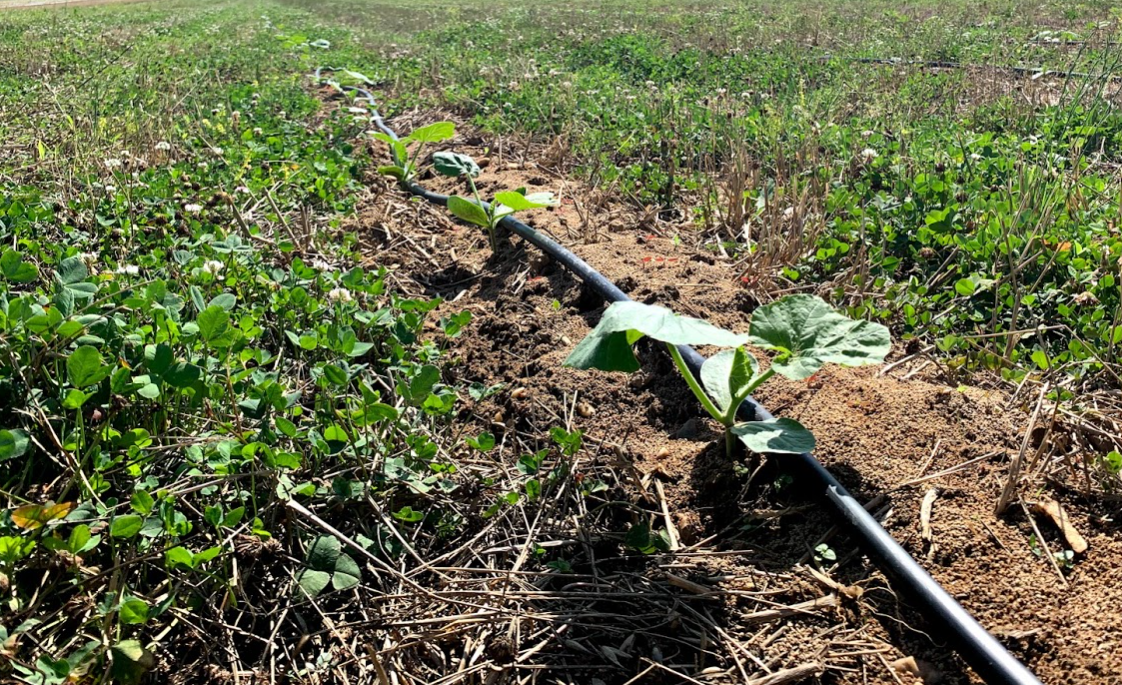
Irrigation
Farmers wishing to increase the efficiency of their water use and protect their profits could utilize micorirrigation (NRCS practice 441 Irrigation System, Microirrigation). Microirrigation may be applied with drip tape or drip tubing using point source emitters or micro-sprinklers. These systems deliver water through low volume and low pressure closer to the plant and root zone for more efficient uptake. In conjunction with irrigation, NRCS helps farmers learn how and when to apply microirrigation based on soil type and crop needs (NRCS Conservation Practice 449 Irrigation Water Management). Producers are encouraged to monitor the potential available water through soil feel and appearance and/or soil moisture meters.




